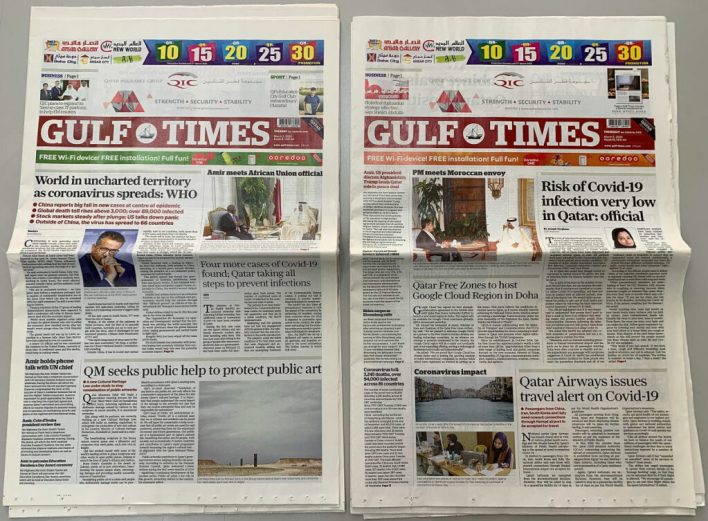
(The opinions expressed in this article are those of the author and do not necessarily reflect those of Al-Fanar Media).
The Covid-19 pandemic has been a learning experience in educational technology for me and many other instructors around the globe. My university and I personally have acquired brand-new hardware and software beneficial to students during periods of online learning. With the return to in-person instruction, however, I have also regained appreciation for old-fashioned classroom materials.
In part because of more time spent indoors during pandemic-related lockdowns, nearsightedness has progressed among young people in many places. I have certainly noticed that some of my students’ ability to see from the back of the classroom has become worse over the last few years. After using minimal amounts of paper during remote instruction, I thus returned to giving printed handouts with course contents.
Ideally, printed material should add value even for those students sitting at the front of the classroom and those with perfect vision. This is the case with maps, for instance. Of course, applications like Google Maps ultimately contain much more information than any bound atlas. However, holding a large folio in one’s hands gives learners an immediate overview of a geographical space without having to zoom in and out on the smaller screens of a phone, tablet or even laptop.
When I was an undergraduate student at the University of Vienna, in Austria, I fell in love with the Tübinger Atlas des Vorderen Orients (TAVO, Tübingen Atlas of the Middle East), a collection of hundreds of detailed maps covering both geography and history. You can find copies of TAVO in many major research libraries serving Middle Eastern studies.
In my own teaching, I have since also employed maps produced by Michael Izady and hosted online by the Gulf/2000 Project, sponsored by the Middle East Institute at Columbia University, in New York. Printouts in A3 or even A4 made with your normal office printer should be very attractive to your students, as they have been to mine.

Of course, you might shy away from the use of large sheets of paper for environmental reasons. However, remember that electronic gadgets all have a carbon footprint too. Plus, those students with smaller phones and laptops are at less of a disadvantage if everyone receives a handout of the same size.
Maps can be used in the teaching of many subjects across the humanities and sciences. The same is true for newspaper articles, which can serve as convenient starting points for discussions. Here, the added value of the original print edition comes from the context. Whether a piece appeared on the front page, how big the heading is and what the surrounding stories are can tell you a great detail about the importance of a news item. Unfortunately, much of this information gets lost in the HTML version of the same article displayed in a web browser.

Going low-tech does not mean that portable electronic devices should be banned from the classroom. I have certainly told various students to put away their phones, if they have felt that they were too distracted by them. However, digital technologies have undoubtedly also promoted accessibility. When some of my myopic students found it difficult to read small text projected at the front of the lecture hall, they simply used their smartphones to take pictures of it and zoom in.
Rather than forbidding the use of phones, I am trying to lead by example. In general, I take notes of various classroom contributions with pen and paper, encouraging everybody else to do the same. I also remind my classes of research that shows that students who took notes in longhand remembered more and had a deeper understanding of the material than those who typed on their laptops. If my learners still preferred to keep their computers running, I at least asked them to close apps that could be distracting to those sitting next to them.
Finally, the form of low-tech (or rather no-tech) teaching that I perhaps missed the most during the Covid-19 pandemic was the simple face-to-face conversation. Although I was available for one-on-one exchanges at the beginning and at the end of class meetings on Zoom, few students logged in early or stayed on after the formal session. Back in the physical classroom, I do have students who come ten or more minutes before the start of a lecture, allowing for valuable informal dialogues or a quiet mindfulness meditation. No pen and paper needed!
Jörg Matthias Determann teaches history at Virginia Commonwealth University in Qatar. He can be reached at [email protected] and on Twitter at @JMDetermann.
Related Reading
- Kindness in the Classroom Is More Important Than Ever During Covid-19
- The Acceleration of Online Education: What Can We Learn from the Crisis and Beyond?
- Universities in Qatar Help Students Stay Connected in a Remote-Learning World
Scholarships – Facebook – Newsletters






